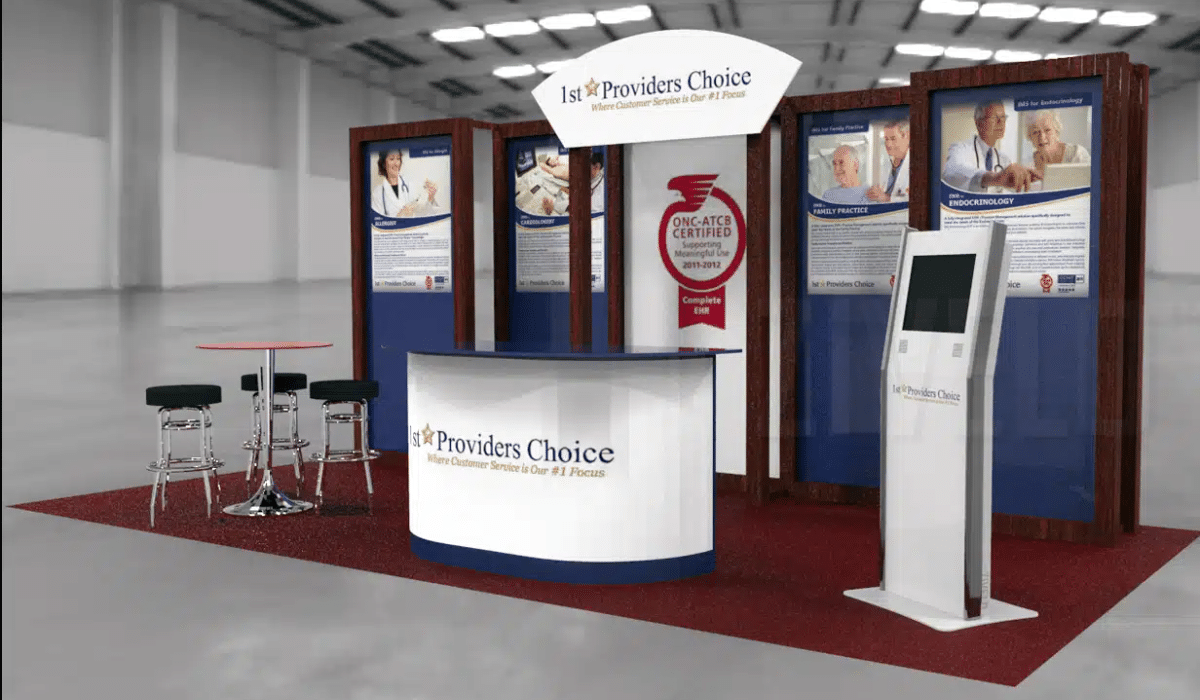Smart Check-Ins for a More Efficient Medical Practice

Not too long ago, patients would arrive, inform the staff, and receive instructions to wait or fill out paper forms. Check-in processes were similar until the pandemic turned these workflows on its head.
To ease patients’ anxiety about long wait times, medical clinics focused on shortening the wait time. For patients who were uncomfortable being near others, physicians offered remote consultations.
Meanwhile, patients started using clinic-prescribed apps more frequently, from filling out digital patient intake forms to using QR codes. Past the pandemic, some check-in processes reverted to the old routine, while others retained some (if not all) of its tech-driven parts.
Now, patients gravitate toward medical practices that respect their time and streamline the check-in processes.
Looking to Speed Up Check-Ins?
The Challenges of Traditional Patient Check-Ins
For years, providing patients with a quick, intuitive, and more private check-in experience was a persistent challenge. A medical receptionist may have to divide his time with multiple patients, attending to both scheduled and unexpected arrivals.
Below are some factors that often lead to patients having an unsatisfactory impression of their visit.
Long Wait Times and Administrative Bottlenecks
Calling insurance providers and checking eligibility can hog the staff’s time. Also, handling copays with card processing issues can create a backlog during peak hours. Even with a slight delay, your staff can tip the balance from a satisfied patient to a very stressed one.
Risk of Errors and Compliance Issues
Besides being time-consuming, manually entering information from paper forms to electronic medical records software can make staff more prone to adding errors to the system. Paper-based workflows are also notorious for lacking audit trails.
Some seemingly harmless transactions may violate compliance with programs like the Quality Payment Program (QPP) or the Health Insurance Portability and Accountability Act (HIPAA). Discussing insurance details at the front desk can expose protected health information to unauthorized individuals.
Paperwork Overload for Staff and Patients
When patients arrive, your staff will hand out various forms for them to complete. Using these forms, they enter the patient’s contacts, medical history, and insurance details into the patient management software.
Practices that rely on printed charts have to update each one manually, and that’s on top of storing or scanning some documents for digital records! Now, picture doing that for every patient who walks in.
The stressful cycle extends beyond your staff; patients also become frustrated with the need to fill out forms with the same information. Worse, they may wonder why they must re-write their details when pre-filled forms are common in banks, government services, or retail transactions.
Dealing with these bottlenecks?Call 480-782-1116 to book a consultation now. Our expert team will help you assess the scheduling issues and match them with the right patient scheduling software in no time. |
How Contactless Check-In Transforms Efficiency
Digital check-in technologies can bridge the gap between outdated manual processes and the seamless check-ins that patients and clinic staff deserve. Specifically, these contactless solutions:
- Eliminate in-person bottlenecks with digital check-ins. Patients don’t need to form a line at the front desk because they can scan a barcode using their phones’ clinic scheduling software.
- Reduce paperwork and improve compliance. When patients finish checking their pre-filled forms and confirm the reason for their visit, your staff receives the automated notification in the dashboard. Their information is integrated into the patient management system, lightening staff workload while complying with data privacy regulations.
- Enhance the patient experience with faster, hassle-free onboarding. Patients complete checking-in within minutes of arriving: no long queues or confusion.
Key Features of a Smart Patient Check-In System

Going for a full suite or picking a standalone patient scheduling kit can be tempting. Healthcare technology expert Jason Keele recommends exploring a few solutions during conference exhibitions: “It’s important to maintain an open line of communication with organizations that doctors are part of.”
Check-in must-haves consist of:
Mobile Check-in and Pre-registration Options
As mentioned above, patients can use their mobile phones to complete online registration before arriving. 1st Providers Choice offers clinics an intuitive mobile app that allows patients to sign forms, review insurance details, and upload image files on insurance cards.
Self-Service Kiosks for Seamless On-Site Check-in
A kiosk synced with medical scheduling software allows patients to confirm their arrival without further staff assistance. As a highly rated solution in Capterra, our check-in kiosk offers multi-language support, on-screen payment options, and digital forms.
Integration with EHR for Real-Time Updates
Recognizing the interoperability needs across integrated healthcare settings, such as hospitals and small practices, 1st Providers Choice enables real-time updates. It automatically routes patient entries from kiosks or mobile apps to a centralized EMR system.
Secure Verification and Contactless Payment Options
Opt for check-in platforms that assist with authorizations or eligibility verifications. Our patient appointment scheduling software provides staff with instant reminders to check authorizations before patients see the doctor, avoiding unbillable services or surprise copays.
In addition, our contactless check-in app supports multiple payment options so patients can make secure payments via credit card or automated clearinghouse (ACH).
Choosing the Right Medical Check-In System
Like every well-informed health-tech consumer, you should establish benchmarks while exploring patient onboarding tools. Any scheduling software for healthcare must cover the following metrics:
User Experience
Assess self-service check-in tools for ease of navigation. Have staff or some volunteer patients test the system’s intuitiveness to identify which patients find it easy or difficult to use.
Patient Communication
Take into account check-in options that allow patients to receive timely notifications during the check-in process. Given your location and the demographic you serve, ask about multilingual options.
Besides your staff, get your patients to list their check-in wish list: Do they want online scheduling features? How about wait time estimates? If you’ve chosen an onboarding system, be sure to inform patients through appointment reminders, signage, and social media.
Security and Compliance
Adopt patient scheduling tools to keep your patient data encrypted and protected against breaches. Opt for platforms that integrate HIPAA-compliant protocols in their check-in workflow. For web-based solutions, check for auto-tracking and inquire if you can opt out.
Tap Into Our Expertise: Upgrade to Smarter Check-Ins Today

Patients value their time. Medical practices that recognize this by offering smooth check-in processes emerge as winners in today’s patient engagement narrative.
As a trusted EMR partner for over 40 years, 1st Providers Choice simplifies contactless patient scheduling for clinics and urgent care centers through customizable check-in features and top-tier support.
The future of medical check-ins is digital, efficient, and patient-friendly. Learn more about 1st Providers Choice’s check-in software solutions today!
Cut the Wait, Boost the Flow

